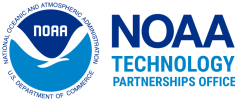Public-private collaborations drive NOAA successes in 2022
Public-private partnerships are vital for bringing private sector innovation and agility to NOAA’s research and development efforts. One of the key tools in NOAA’s partnership toolkit is the CRADA, or Cooperative Research and Development Agreement.
“A CRADA is a flexible tool that helps NOAA work quickly and easily with the private sector. CRADAs help facilitate a collaborative, two-way exchange of information, technologies, and ideas,” says NOAA Technology Transfer Program Manager, Wayne Mackenzie.
A CRADA is a formal agreement that allows federal and non-federal partners to do collaborative research and develop new science into commercially-available technologies. Specifically, CRADAs establish partnerships between NOAA Laboratories or Science Centers and private U.S. companies, universities, and other entities. These valuable tools help create flexible and agile collaboration spaces by allowing partners to more quickly and easily share ideas, expertise, facilities, and other research materials.
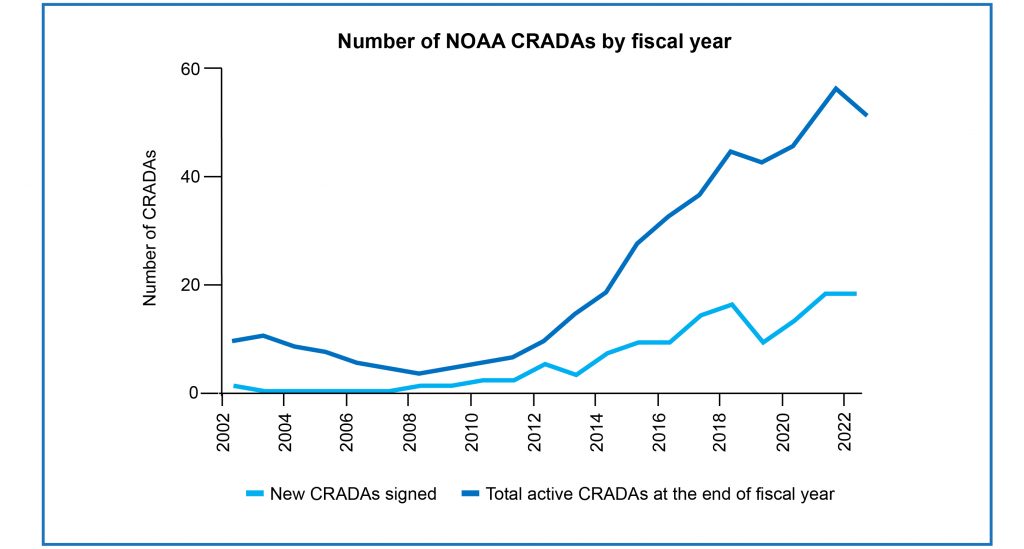
The NOAA Technology Partnerships Office (TPO) is responsible for managing all of NOAA’s CRADAs. TPO initiated 18 new CRADAs in Fiscal Year 2022, which is the highest number of agreements ever to be started in one year at NOAA. NOAA and its research partners benefitted from a total of 52 active CRADAs this year. The number of CRADAs at NOAA is increasing as more federal researchers and potential partners understand the value of existing public-private research and development efforts.
Following are some of the CRADA partnership highlights from this year:
Satellite technology to provide faster and more accurate forecasts
NOAA and Boston-based company tomorrow.io joined forces to provide more timely access to satellite data and scientific models that decision-makers can use to protect the nation’s security, environment, economy, and quality of life. Tomorrow.io is a weather intelligence and climate security platform that provides information and data visualizations to help countries, businesses, and individuals better manage weather- and climate-related challenges, such as coastal flooding. NOAA is working with tomorrow.io’s new satellite constellation to combine the company’s hyper-local data with NOAA’s global weather models. The goal is to produce accurate and high-resolution precipitation forecasts for very large areas.
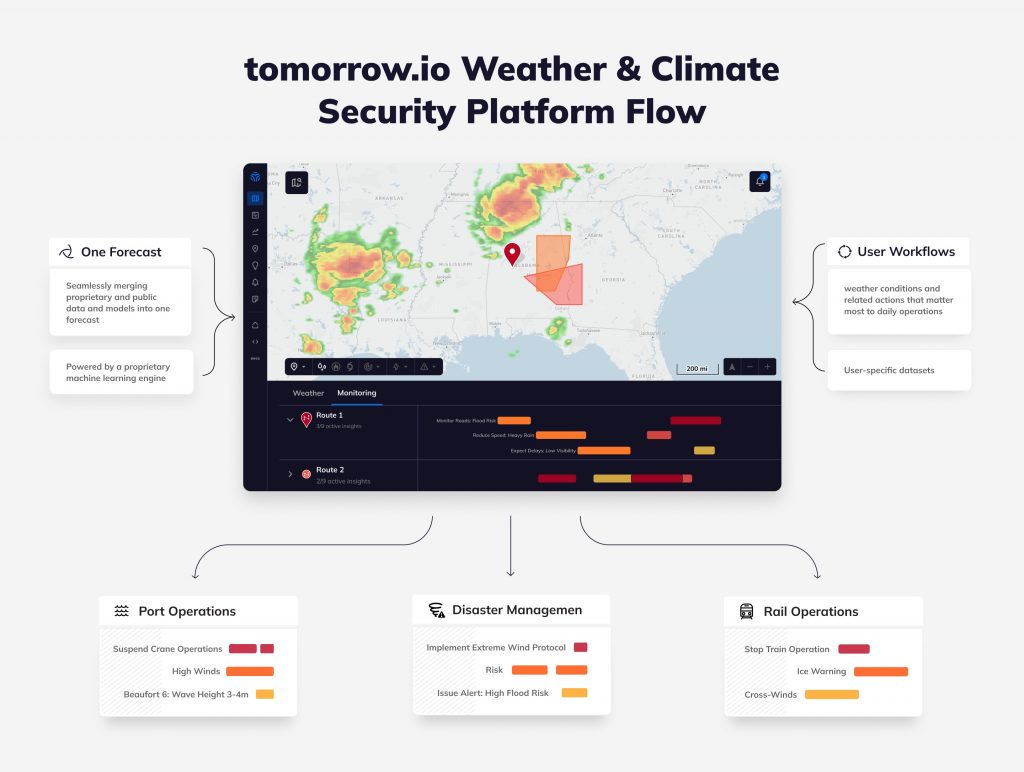
A collaboration advances oyster probiotic research
NOAA’s Northeast Fisheries Science Center has teamed up with a number of companies to test a new technology that could improve oyster larvae survival rates in hatcheries around the world. The collaborators are working together to test the effectiveness of a NOAA-developed oyster probiotic called OY15. Through a special CRADA collaboration called a Material Transfer Agreement, NOAA transferred the probiotic to a company called Prospective Research, Inc. so it could be further developed into a commercially-available form. Then, a new powdered version of the probiotic was again transferred to three oyster hatcheries – Pacific Hybreed, Inc., Taylor Shellfish Farms, and Cartron Point Shellfish, Ltd. – so it could be further tested and refined to give oyster hatchery farmers an advantage against disease. Read more about this public-private research collaboration.
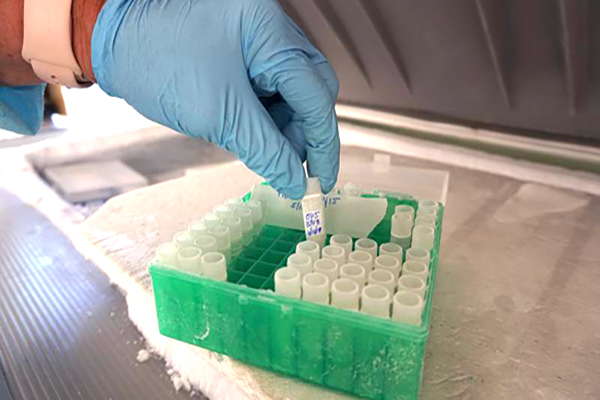
Uncrewed ocean vessel technology benefits from tank tests
NOAA’s Southwest Fisheries Science Center has granted two small companies access to use their Ocean Technology Development Test Tank. The companies will use the tank to test their uncrewed ocean research vehicles before performing more tests in the ocean. California-based Seatrec, Inc. is developing an uncrewed sea profiling float that will help NOAA researchers generate and communicate scientific data that informs marine life management and conservation efforts. San Diego-based SubSeaSail, LLC is developing an autonomous vessel that will also use the tank for testing. These public-private collaborations are made possible using a third type of CRADA called a Facilities Use Agreement.

Climate prediction capabilities get a boost from the cloud
Microsoft and NOAA have teamed up to leverage the Azure Artificial Intelligence platform and high-performance cloud computing capacity to improve NOAA’s environmental prediction capabilities. “We are excited about the potential of partnering NOAA’s environmental intelligence with Microsoft’s cloud computing in hopes of amplifying NOAA’s ability to predict climate, weather, and ocean changes,” said NOAA Administrator Dr. Rick Spinrad. A key goal of this partnership is to create a searchable data catalog that supports public policy, economic growth, environmental protection, and increased climate resiliency. Read more about how this project will support NOAA’s mission to create a Climate-Ready Nation.
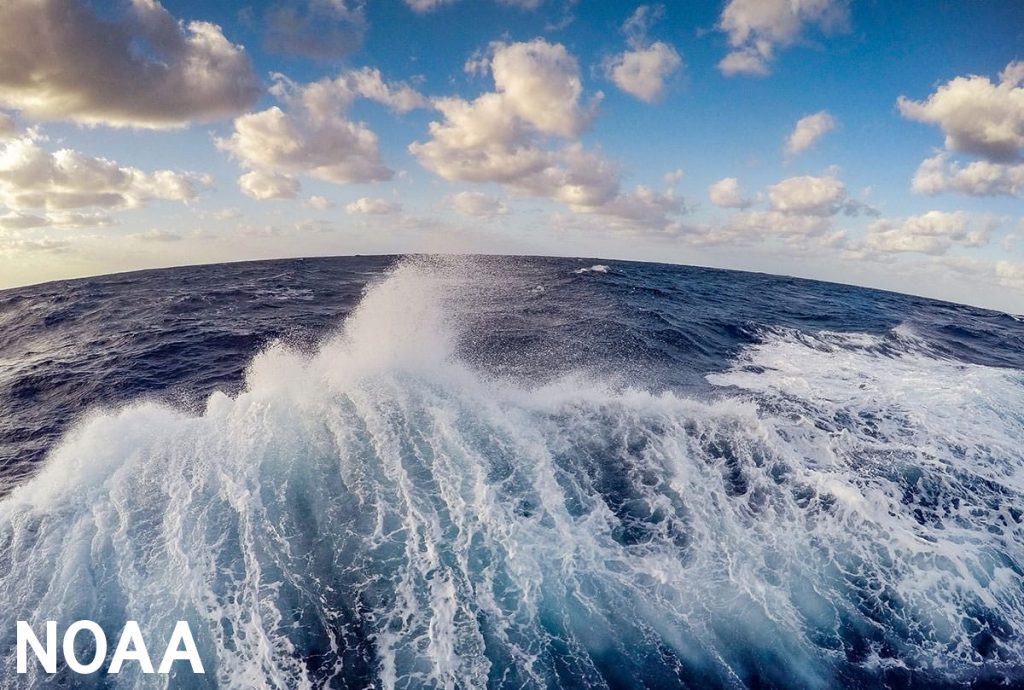
CRADA impacts on the future
The cumulative economic and scientific impact of NOAA’s public-private partnerships is significant. These collaborations increase NOAA’s capacity to do scientific research, stimulate technological innovation, and generate broad economic value for the U.S. economy, the global New Blue Economy, and individual U.S. businesses. As scientific research is called upon to inform solutions for some of society’s most pressing challenges, partnerships are essential and CRADAs unlock enormous potential for collaborative problem-solving and innovation.
Visit the NOAA Partnerships Page for additional information about the NOAA Technology Transfer Program, view a list of NOAA’s active CRADAs, and read about other CRADA success stories.
Note: Any reference obtained from this website to a specific company, product, process, or service does not constitute or imply an endorsement by NOAA.
Story published on December 22, 2022 by Matthew Bryant
Media contact: suzi.webster@noaa.gov
